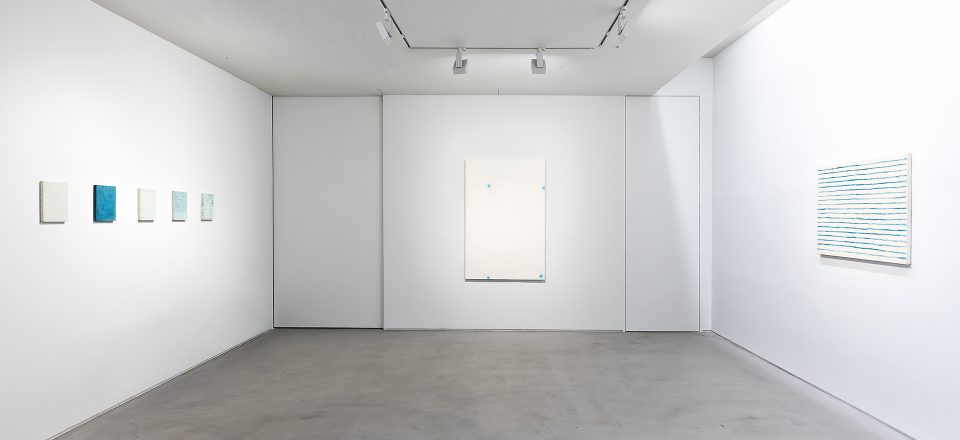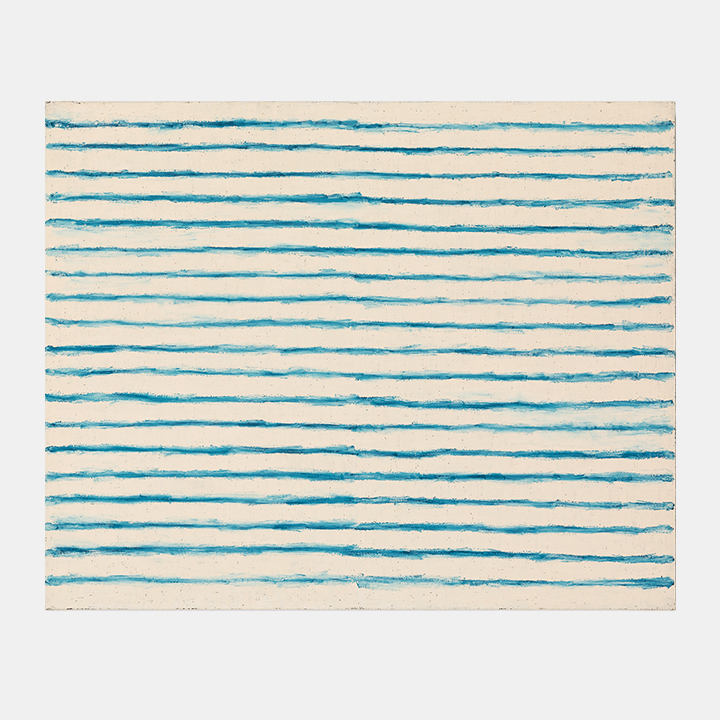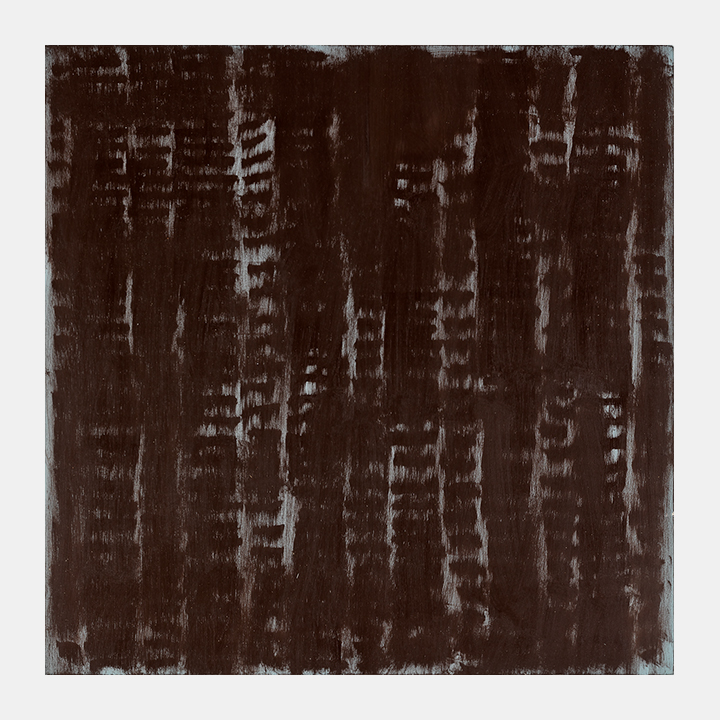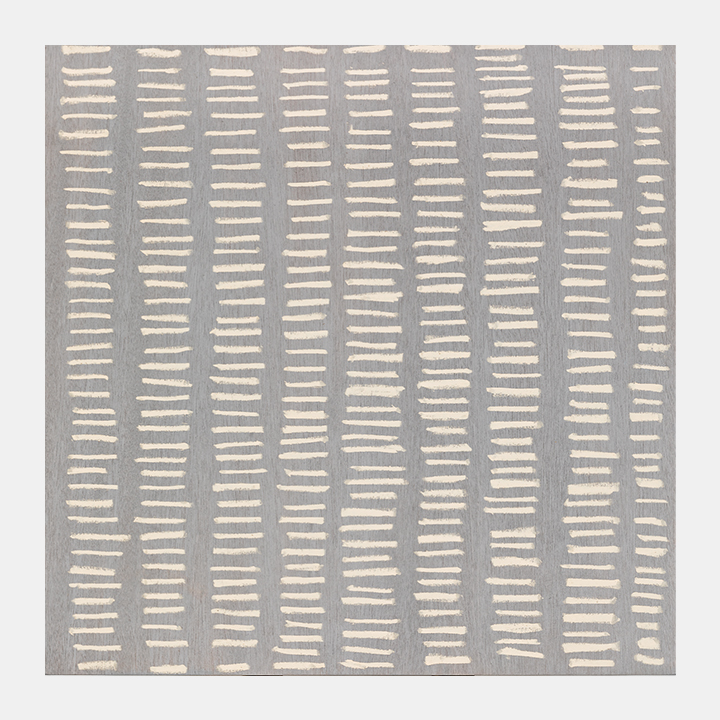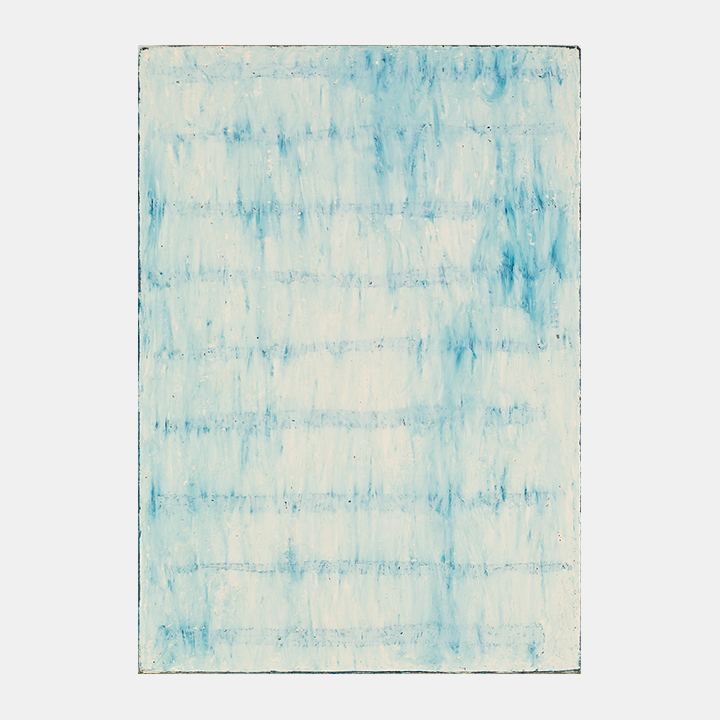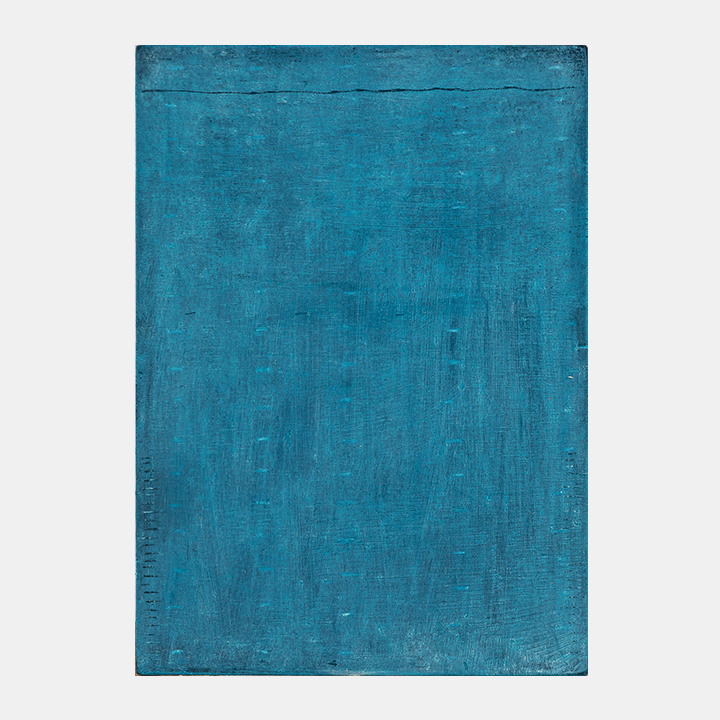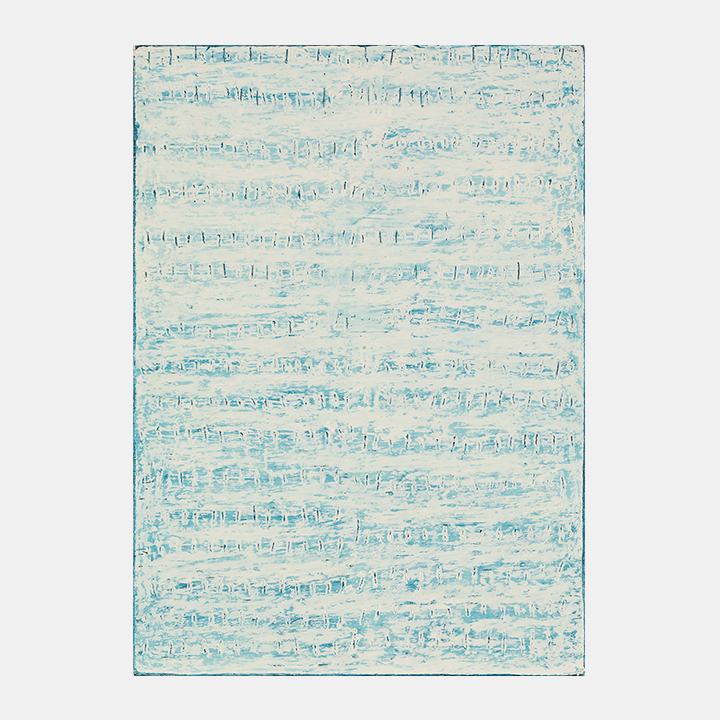ARTIST
David Quinn
데이비드 퀸
1971-
Born in Ireland, David Quinn (b. 1971) is best known for his “Notebook” series. He creates his work by placing the paper on plywood, of the same size as the sketchbooks he used as a design student. The paintings are summaries of his thought process, like how he jots down random thoughts on a small notebook he carries around. David produced small abstract paintings on plywood for a long time. The small-scale allows him to concentrate on the process as if he is instinctively doodling.
At times, David compares his work to poetry. Like the traditional Japanese haiku, analogous in their projection of the spirit, the artist claims, “Painting is silent poetry.” He creates paintings out of sketches from the visual diary in his notebook, which reflects his deeper thoughts with using lines and dot instead of words. The repetitive lines, dots, and grids that are evident in his works are like words that make up sentences: a persistent rhythmic buzz.
The small-scale works that can be nestled in one hand remind us of an old notebook. The plywood he mainly uses in his works seems old, with faded colors, and worn-out corners. The artists consider them as time-makers. The finished work may be a painting, but the time he spent in creating, and his thoughts reflecting during the process, represent ‘time spent in contemplation.’
아일랜드 출신의 데이비드 퀸(b. 1971)은 연작을 중점적으로 전개한다. 그는 디자인할 때 사용했던 스케치 노트와 동일한 크기의 나무 합판 위에 종이를 붙여 그림을 완성한다. 순간적으로 떠오르는 자신의 생각을 휴대하기 간편한 작은 노트에 정리해 두곤 했던 작가는 자신의 생각을 적어 내려가듯 회화를 구현했다. 데이비드는 오랜 기간 동안 작은 사이즈의 합판 위에 많은 추상화를 만들어 냈다. 제한된 작은 공간은 마치 그가 의식 없이 낙서를 하는 것과 같은 화면을 만들어내도록 유도한다.
데이비드는 작업을 종종 시에 비유한다. 마치 일본의 단시(短詩)에서 작업의 정신을 볼 수 있듯, 그는 ‘회화는 조용한 시’라고 믿는다. 이는 작가가 시각적인 조형요소로 일기를 쓰는 것에서 작업을 시작한 것처럼, 자신의 상념을 단어가 아닌 점과 선으로 회화화(-化)한 것이다. 특히 그의 작업에서 반복적으로 나타나는 점·선·그리드는 문장을 구성하는 ‘낱말’로서의 구성에서 나아가, 일정하게 흘러나오는 신체적인 리듬의 형태를 보여주기도 한다.
한편, 한 손 안에 들어오는 그의 작은 작업들은 오래된 노트를 떠올리게 한다. 작업의 주요한 소재인 나무 합판은 오래된 듯 색이 바래 있고, 모서리들은 부드럽게 닳아 있다. 작가는 작품을 통해 시간을 창조한다고 말한다. 결국 그가 완성하는 것은 하나의 회화이지만 이를 만들기 위해 스스로가 소비하는 시간 그리고 그 과정 안에서 반영되는 자신의 생각까지, 데이비드는 ‘명상의 시간’이 자신의 작업에 투영된다고 여기는 것이다.
